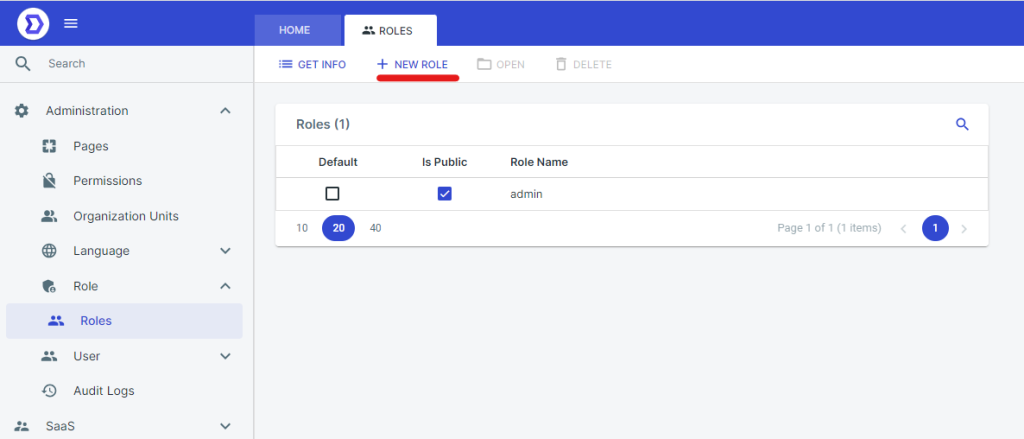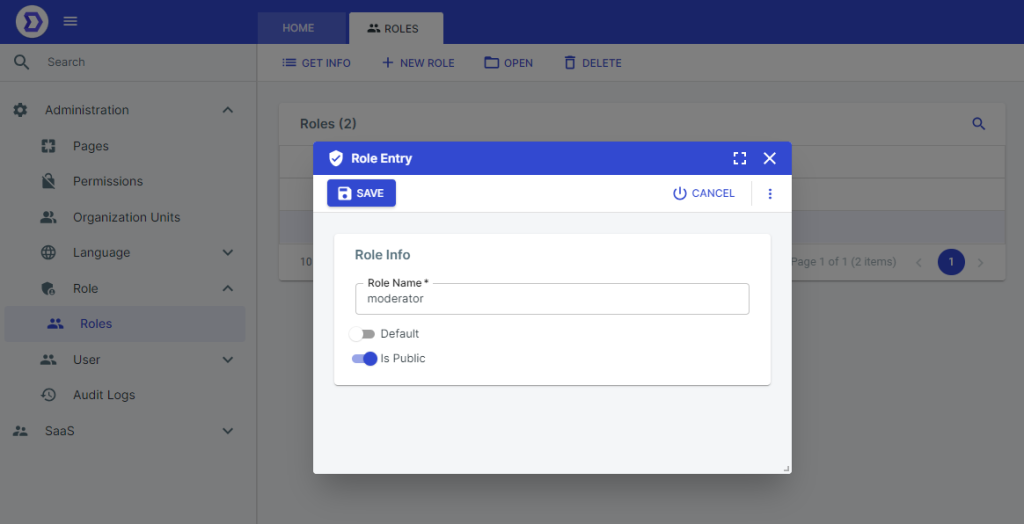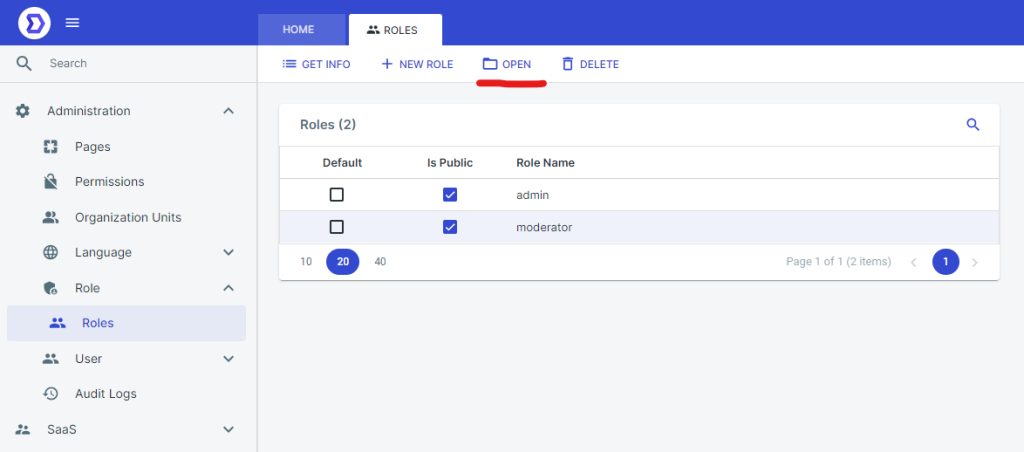Zeroplat provides a flexible system for managing roles within an application. This document describes how to manage roles using Flowfy.
Overview
Roles in the Low-Code Platform allow users to group related permissions into logical units. Roles are assigned to users and determine what actions and resources are available to them within an application.
Role management
View Roles
To edit an existing role, follow these steps:

Roles Page
Creating Roles
To create a new role, follow these steps:
- Navigate to the “Roles” section in the platform’s menu.
- Click the “New Role” button.
- Name the new role and define its permissions.
- Save the new role.

Save Role
Editing Roles
To edit an existing role, follow these steps:
- Navigate to the “Roles” section in the platform’s menu.
- Click on the role you want to edit.
- Modify the role’s permissions.
- Save your changes.

Conclusion
Zeroplat role management tools provide users with a powerful way to manage permissions and resources within their applications. By following the steps outlined in this document, users can create and manage roles, assign roles to users, and manage permissions for roles within their applications. By using roles, users can create a more organized and manageable application environment, while ensuring that users only have access to the resources they need.